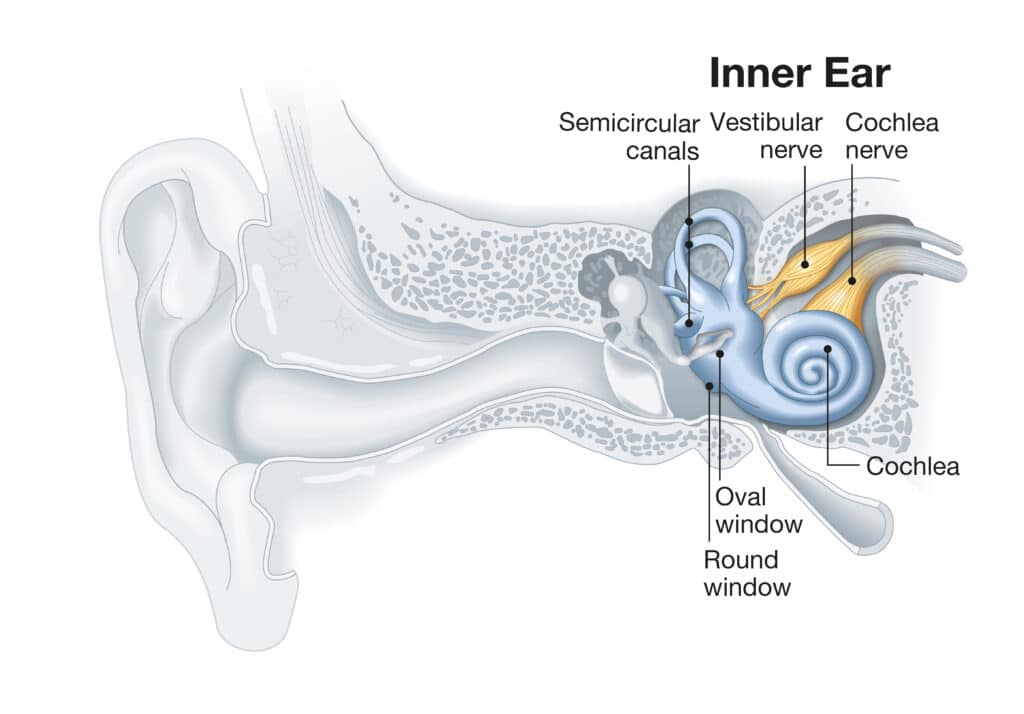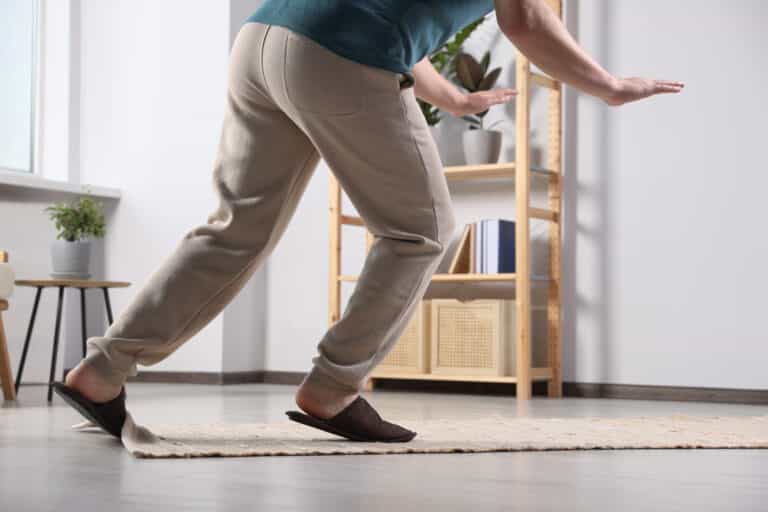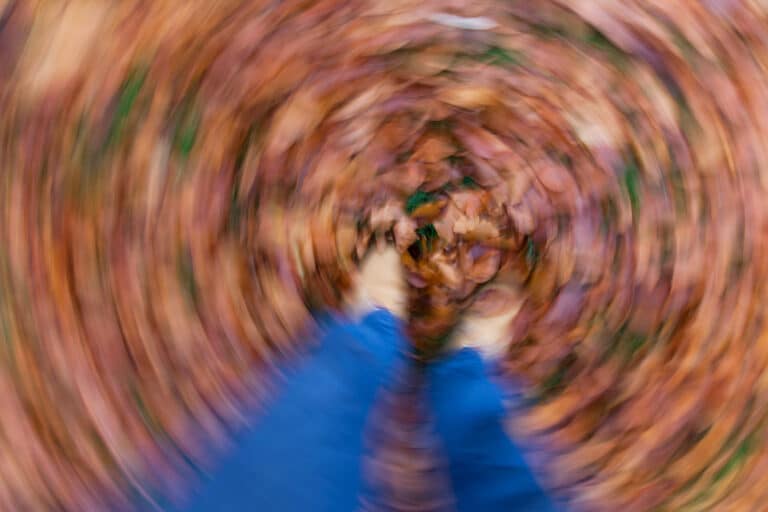You might associate balance with acrobats, tightrope walkers, or dancers. But have you ever considered the young toddler taking her first steps or the older adult navigating a busy street? Understanding how the body balances is essential regardless of your age or lifestyle.
Walking, turning, and standing each day, we perform our remarkable balancing act. While we often take it for granted, every step involves real-time feedback and communication between different body parts. Within our bodies lies a complex network of systems, each of which has evolved over millennia to ensure survival.
These systems help us stand upright in a gust of wind and provide the foundation for every athletic feat, dance move, and even our ability to sit in a chair without toppling over. They systems work together, constantly adjusting and communicating to ensure we remain upright, even when encountering external disturbances.
This article aims to illustrate the details behind our innate skill of equilibrium: our body’s intricate balance systems. We’ll explore the body’s balance pathways the interplay of the vestibular, visual, and somatosensory systems, and gain insights into conditions that might disrupt this equilibrium. I’ll also some insight from my clinical practice as a physical therapist to act as your guide.
Let’s unpack the layers of these systems to appreciate the hidden complexities of balance.
Vestibular System: The Inner Ear’s Balance Tool

We’ll start with a simple metaphor that I like to provide to my patients to help illustrate how the vestibular system works:
Imagine holding a half-filled water bottle and tilting it. The liquid inside sways in response to your movements. That’s a simple metaphor for the vestibular system in your inner ear. This fluid-filled structure helps you sense orientation and movement relative to gravity by allowing your brain to adapt to movement.
There are some important organs to consider when discussing the vestibular system:
Semicircular Canals: These three canals detect rotational movements like turning your head or spinning around to help keep you oriented.
Otolith Organs identify linear movements, like when you are in an elevator or a car moving straight. Additionally, these organs consist of otoconia (crystal-like substances) that provide feedback on your head’s position concerning gravity, even when stationary.
Together, these tiny structures act as your body’s level, ensuring you can adjust to the ground and directional movements as you move forward, backward, side-to-side, or turn.
Visual System: More Than Just Sight
Your eyes provide essential information about your surroundings and position. It’s like a camera, constantly scanning and sending real-time footage to the brain, aiding in determining our place in the environment.
Poor vision or depth perception can make it hard for your brain to determine where you are in space. This means that being able to see properly is one of the most important parts of how the body balances.
Somatosensory System: The Feel of Balance
This intricate network is about physical sensations and the information they provide about where you are in space. The somatosensory system informs your brain about where you are in relation to your surroundings by sensing movement, touch, and position.
For instance, if you are standing on an incline, my somatosensory system can help determine what type of surface I am on (concrete vs. grass), the angle of the ramp (incline vs. decline), and my posture relative to the ramp so you do not fall.
The combined efforts of these three systems create a network of signals that travel to the brain.
Once there, multiple brain areas process this information, ensuring every move you make is in harmony with the world around you. However, when these signals conflict or become distorted, it can result in feelings of imbalance or dizziness.
Our body also has built-in reflexes that kick in to maintain balance:
The vestibular-ocular reflex keeps your vision steady while you’re in motion. If you’re walking and trying to focus on an object, this reflex ensures your gaze remains fixed on the target.
The vestibulospinal reflex acts as your internal guardian, helping you maintain an upright posture. If you encounter a sudden slip, it’s there to catch you, activating the right muscles to prevent a fall.
Like its counterpart above, the vestibulocolic reflex stabilizes your head and neck when the vestibular system detects movement.
Common Issues Affecting How the Body Balances
Our balance systems aren’t foolproof, and several common conditions can interfere, potentially leading to problems encountered by many seniors.
Vestibular Disorders
As we age, inner ear changes like loss of hair cells, nerve function degradation, and fluid composition changes can distort the signals to our brain, leading to imbalance or dizziness.
Benign Paroxysmal Positional Vertigo (BPPV)
BPPV is the most common cause of vertigo (a sensation of spinning) that is brought on by position changes (most commonly with lying down or rolling over).
This is due to the displacement of otoconia—crystal-like substances that sit on top of hair cells to sense changes in a position related to gravity. Typically, when these fall loose, they will dissolve in the fluid that makes up the inner ear.
Age-related changes to the otoconia and the fluid itself can make it more difficult for these particles to dissolve. The free-floating otoconia can then drift into a different part of the vestibular system (the canals), leading to vertigo.
Many of my patients with BPPV report a fear of moving due to dizziness and increased balance challenges due to the condition.
Labyrinthitis/Neuritis
Inflammation due to infections in the inner ear can result in distressing balance problems. Symptoms typically include dizziness, nausea, vomiting, ringing in the ear and/or hearing loss.
Dizziness typically begins with a room-spinning sensation, often lasting two or more days.
Many people will fully recover from this condition. Still, some will have residual imbalance and dizziness due to damage to the inner ear.
Vision Issues

Regardless of the cause, vision loss is associated with an increased chance of balance problems. As we age, visual acuity often naturally declines and can be worsened by other eye conditions such as cataracts or glaucoma.
Cataracts are one of the most common age-related vision problems, leading to blurry vision and difficulty seeing at night due to the eye’s lens becoming cloudy.
Presbyopia is when the lens loses the ability to adjust between near and far vision. This is another common age-related eye condition in which you have more difficulty seeing things up close, which can interfere with depth perception.
Prior Injuries or Surgeries
Your physical fitness and muscle strength significantly affect your overall balance and ease of movement. A history of injuries or surgery, especially in the legs or lower back, will impact your strength and ability to detect where your body is in space. This sensory ability is called proprioception.
For example, having a history of ankle instability or frequently rolling the ankle has been shown to result in decreased proprioception in this joint. The lack of proprioception can make responding appropriately to changes in walking surfaces or navigating uneven ground more difficult.
Neuropathy
This is a very common condition affecting older adults, especially those with a history of diabetes. It typically affects the peripheral nerves of the legs, feet, and hands. Symptoms usually include sensations of tingling, numbness, or burning.
When these nerves are damaged, they cannot accurately communicate with the brain regarding where you are in space and the surface you are standing on, making it more challenging to balance.
It is also possible to have neuropathy that affects the motor nerves, leading to muscle weakness and/or cramping, which can further impact your balance.
Brain Conditions
Finally, many brain conditions affect your ability to interpret and respond to sensory information from the body. These may include stroke or Parkinson’s Disease, among others, and the severity of such conditions can vary widely.
In these cases, the body may still collect all the correct information. Still, your brain has more difficulty understanding and activating the right motor neurons to respond to the information.
Treatment for Common Balance Issues
First, you must talk with your doctor when you experience new or worsening symptoms of imbalance, dizziness, sensation, or vision changes. They will ask questions regarding your symptoms to help determine the most likely cause of your problem. Treatment can vary based on your specific condition.
New, sudden dizziness, especially accompanied by other symptoms like double vision, difficulty speaking or swallowing, muscle weakness, severe headaches, and/or chest pains, requires immediate attention in the emergency room to rule out more serious problems.
Inner ear issues can often be addressed by a specialized physical therapist or an ear, nose, and throat doctor (ENT) if an infection is suspected that would require medication.
Vestibular therapists are trained in fixing BPPV and helping restore the vestibular system’s regular activity following a balance-related illness.
An optometrist or ophthalmologist addresses vision problems. Yearly check-ups are recommended to track changes in your vision and ensure eye health. Vision problems with age are widespread. Treatment may require something as simple as new glasses or eye drops or, in some severe cases, like the removal of cataracts, may require eye surgery.
Key Takeaways
- Balance is crucial for all ages.
- We have three primary balance systems: vestibular (inner ear), visual, and somatosensory.
- The vestibular system senses orientation and motion.
- Eyes scan surroundings for spatial feedback.
- Physical sensations determine our position in space.
- Reflexes stabilize vision and posture.
- Common balance issues: inner ear disorders, vision problems, past injuries, neuropathy, and brain conditions.
- BPPV causes vertigo due to inner ear disturbances.
- Age-related vision issues like cataracts disrupt balance.
- Injuries and neuropathy affect spatial awareness.
- Brain conditions can hinder sensory data interpretation.
- Consult a doctor and get regular check-ups for balance concerns.
FAQs
How does balance play a role in preventing injuries?
Balance, while often overlooked, is a critical component in injury prevention. By maintaining stability and equilibrium, individuals can avoid slips, falls, or missteps leading to injuries. A robust balance system reduces the risk of strains, sprains, and fractures even when we think we’re motionless or still.
Can exercises improve one’s balance capabilities?
Absolutely. Balance exercises, often incorporated in fitness regimes like yoga, tai chi, and certain physical therapy programs, can enhance an individual’s stability. Such exercises often involve core strengthening and activities that challenge our balance systems, leading to improved spatial awareness and coordination.
How can someone determine if they have a balance disorder?
While the article outlines some common symptoms and conditions related to balance issues, it’s vital to consult a healthcare professional if you suspect a balance disorder. They can conduct specialized tests, analyze your symptoms, and offer a proper diagnosis. Some signs to look out for include frequent dizziness, vertigo, or unexplained falls.
Does footwear play a role in maintaining good balance?
Yes, the type of footwear one chooses can influence balance. Shoes with proper arch support have a sturdy base and fit well, enhancing stability. Conversely, ill-fitting shoes or high heels can challenge maintaining equilibrium, especially on uneven surfaces.
References:
- Auditory and vestibular systems (sensory system) part 3. What-When-How. http://what-when-how.com/neuroscience/auditory-and-vestibular-systems-sensory-system-part-3/
- Hain, T. Postural, vestibulospinal and vestibulocollic reflexes. Dizziness-and-balnace.com. (2022)https://dizziness-and-balance.com/anatomy/physiology/vspine.htm#:~:text=The%20vestibulocollic%20reflex%20acts%20on,reflex%20are%20as%20yet%20uncertain.
- Arshad, Q., & Seemungal, B. M. (2016). Age-Related Vestibular Loss: Current Understanding and Future Research Directions. Frontiers in neurology, 7, 231. https://doi.org/10.3389/fneur.2016.00231
- Johns Hopkins Medicine. Benign Paroxysmal Positional Vertigo (BPPV). https://www.hopkinsmedicine.org/health/conditions-and-diseases/benign-paroxysmal-positional-vertigo-bppv
- Barkwill D, Arora R. Labyrinthitis. [Updated 2022 Sep 30]. In: StatPearls [Internet]. Treasure Island (FL): StatPearls Publishing; 2023 Jan-. Available from: https://www.ncbi.nlm.nih.gov/books/NBK560506/
- Kahiel, Z., Grant, A., Aubin, M. J., Buhrmann, R., Kergoat, M. J., & Freeman, E. E. (2021). Vision, Eye Disease, and the Onset of Balance Problems: The Canadian Longitudinal Study on Aging. American journal of ophthalmology, 231, 170–178. https://doi.org/10.1016/j.ajo.2021.06.008
- Shalchi, H. Aging eyesight issues and treatment. Baylor College of Medicine. November, 2022. https://www.bcm.edu/news/aging-eyesight-issues-and-treatment
- Xue, X., Ma, T., Li, Q., Song, Y., & Hua, Y. (2021). Chronic ankle instability is associated with proprioception deficits: A systematic review with meta-analysis. Journal of Sports and Health Science, 10(2), 182–191. https://doi.org/10.37766/inplasy2020.4.0125
- Fox Integrated Healthcare. The Impact of Neuropathy on Strength and Balance. https://foxintegratedhealthcare.com/neuropathy/the-impact-of-neuropathy-on-strength-and-balance/






